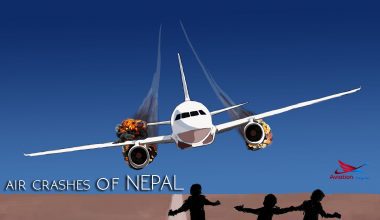Importance of Airport Marking Signs & Symbols
May 1, 2017-Nepal
Marking Signs and Symbols in the airport are really a much needed components for the pilots and the ground staffs. It assists the aircraft, ground vehicles during taxi, takeoff and landing for safe operation at the airport. These Marking signs and symbols should be uniform around all the airports globally. Procurement of these signs and symbols needs to maintain some certain standards which are created for the implementation by every airport operator.
Every country has their own rules and regulations based on ICAO documentation, such as Annex 14, Volume I (Aerodrome Design and Operations) and the Aerodrome Design Manual, Part 4 (Visual Aids). The flight crews must familiarize him/herself with these markings which can be found in the appropriate documentation (AIP).
This information is uniform and the presentation will be the same on every airport around the world, due to the influence of ICAO. You should know these signs by heart.
Runway & Taxiway Markings:-
Like roads which take us from our home to our destination, airports have taxiways which take us to and from our runway to the destinations.
Along those roads, or taxiways, exists a variety of markings signs and symbols which provide guidance to pilots and the ground staff operating on the airport surface during arrival and departure
Having familiar knowledge of run and taxiway markings can make the job much easier for the pilot when visiting other airports than those without the signs.
Runway Markings and Signs, AIM:-
Precision, non-precision and visual runways have their own distinct markings, ranging from threshold, designation, centerline, touchdown zone and aiming markers.
Smaller airports usually have no full instrument approach; aircraft fly with Instrument flight rules (IFR) to a certain altitude and distance and then complete operation by the flight Visual flight rules (VFR). These runways have different markings. Runways can have different markings depending on the fact if there is a precision or non-precision approach.
Displaced Thresholds:-
Obstacles in the approach path sometimes make it necessary to displace the runway threshold marking. There are three possibilities to indicate such situations: displaced threshold, taxiway aligned with runway and blast pad or stop way marked with chevrons.
Chevrons indicate an area which is unusable for aircraft landing, taking off and taxi. Their color is yellow and aircraft should not go there at all times except when used in emergencies.
That area at the beginning of the runway marked with a large arrow can be used for takeoff but not for landing. This saves time and gets you in the air sooner and a better obstacle clearance.
Runway threshold stripes indicate the width of the runway: 4 stripes is 60 feet (18 m), 8 stripes is 100 feet (30 m) and 12 stripes is 150 feet (45 m).
Taxiways:-
You will see that taxiways have at least a centerline and runway holding markings as a bare minimum. Whenever the taxiway is not separated from other pavement there will be an edge marker. The centerline is a continuous yellow line and the taxiway edge lines can be a double continuous or dashed line. Where the dashed line indicates that there might be a need for aircraft to enter that particular area, e.g. an apron or such.
Holding Positions:-
Aircraft may be instructed to hold at a certain point before entering or crossing an active runway. This is marked by a double dashed and continuous yellow line. If there is an ILS approach to that runway there is an extra double yellow line with vertical connecting lines, you need to hold at that position when instructed to do so.
The area beyond this line is called the ILS critical area and any object here may disturb the ILS radio signals causing navigational problems for aircraft on the final approach path.
Airport Signs:-
Airports have six different types of signs: mandatory, location, direction, destination, information and runway remaining signs. Mandatory and runway holding signs are in red, location signs are predominantly black and yellow text. Direction signs are yellow with black text; sometimes an arrow is added to indicate a direction.
Similarly, at the present context of Nepal none of the airports out here poses proper taxiway and runway markings. Also we hardly find any airport markings at entire airport of the country.






